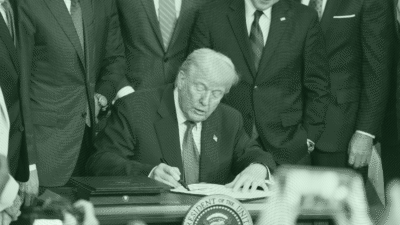How Interest Rates Cut Into Morgan Stanley’s Earnings
Morgan Stanley’s performance was held down by its wealth management division and a Federal Reserve that is stuck in neutral on rate cuts.

Sign up for market insights, wealth management practice essentials and industry updates.
A rising tide doesn’t lift all boats, and Morgan Stanley’s wealth arm can attest to that. This week, the investment bank soundly beat expectations and reported a profit increase of more than 40% in the second quarter. (Round of applause.) However, Morgan Stanley’s performance was held down by its lagging wealth management division, thanks in part to a Federal Reserve that is stuck in neutral on rate cuts.
A Shot in the Arm
Morgan Stanley’s wealth arm, which oversees $5.7 trillion in assets, attracted only $36.4 billion this quarter, below analysts’ expectations and a far cry from the roughly $90 billion it reported for the same quarter last year. The division’s revenue rose just 2% to $6.79 billion year-over-year, and interest income was $1.79 billion, a 17% fall from last year’s second quarter.
Morgan Stanley claimed the Federal Reserve’s policy of higher-for-longer interest rates is causing the bank’s wealthier clients to shift cash into higher-yielding assets. That means lower deposits and dwindling profits. The bank is trying to remain positive, though, with executives telling analysts that despite net inflows slowing, the unit is growing within the bank’s expected range of 5% to 7% annually:
- The bank made waves in 2020 after purchasing trading platform ETrade (you remember, the one with the talking babies). But that momentum has significantly slowed: Federal interest rates have stood between 5.25% and 5.5% for almost a year now.
- Morgan Stanley’s not the only one feeling interest rate pains this week. Bank of America, the second-largest bank in the US, reported it earned a profit of $6.9 billion in the second quarter, beating analysts’ estimates. But as a result of interest expenses eating into its interest income, those profits fell below the $7.4 billion BofA raked in last year.
Here’s the Plan: In March, Morgan Stanley Wealth Management chief Jed Finn said the key to fully realizing the division’s potential requires funneling new clients to advise relationships and providing them with a wide variety of investment options. The bank has “over 200 products, 15% of which are unique at Morgan Stanley,” he told Barron’s. Finn said his hope is to get the arm’s AUM up to $10 trillion, a more than 40% increase from what it is now.











